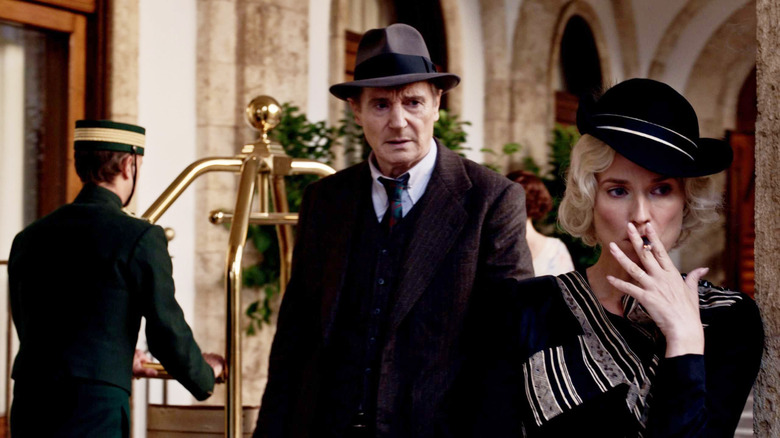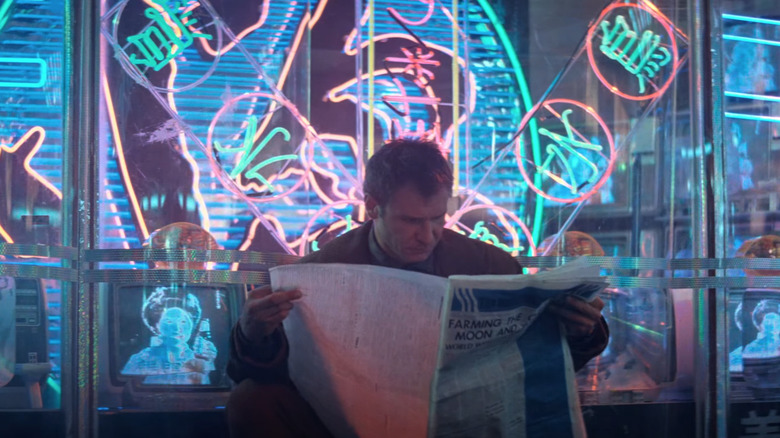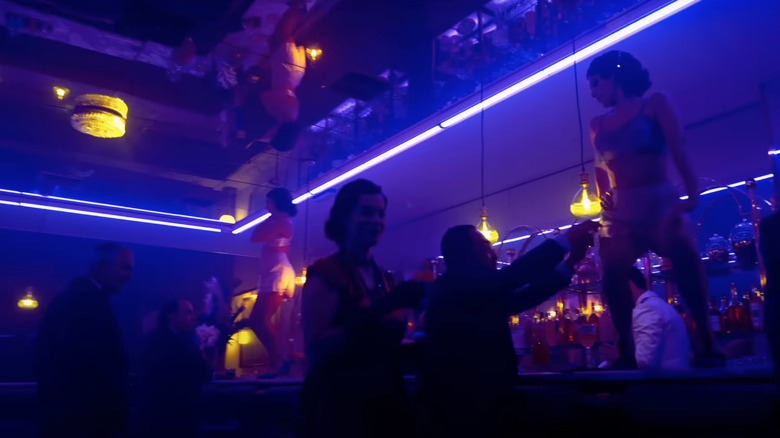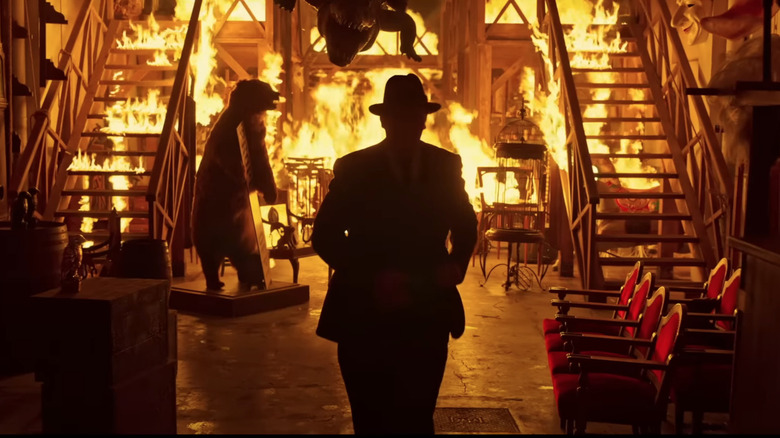How Blade Runner Influenced The New Noir Film Marlowe [Exclusive]
Ever since "Taken" proved a huge hit in 2008, Liam Neeson has been taking on action roles as often as possible. Along with the "Taken" sequels, he's since shown up as an (increasingly generic) aging badass in movies such as "Unknown," "Non-Stop," "Run All Night," and "The Marksman."
But before that sharp change in career trajectory, the Irish actor was known as a serious dramatic performer. Now, with his latest role in Neil Jordan's "Marlowe," the 70-year-old — who's repeatedly claimed he's retiring from action films — combines the gruff machismo of his action roles with the more reflective, brooding aspects of Raymond Chandler's classic private eye character, Philip Marlowe.
/Film's Jack Giroux spoke with Neil Jordan, who said of his former "Michael Collins" collaborator, "I've done three or four movies with Liam in the past, and he's been firing weapons and using his fists, which he's very, very good at. I wanted to see what he would do with the slow, contemplative burn." But it wasn't just about directing Neeson in something other than an all-out action thriller. For Jordan, the chance to make a "noir movie that is absolutely drenched in color and in dazzling sunlight" presented a similarly intriguing opportunity.
But in order to create the colorful 1930s Los Angeles he envisioned, Jordan decided to shoot thousands of miles away from the actual City of Angels. He found his ideal location in the landscape of Barcelona and its surroundings, which proved ideal to recreate what he termed "the city of canyons and hills." What you might not expect, however, is how influenced Jordan and his team were by Ridley Scott's neo-noir, cyberpunk masterpiece "Blade Runner" when creating their vision of 1930s LA.
The neon noir of Blade Runner
From the famous "Hades" opening shot, 1982's "Blade Runner" depicts one of the most immersive on-screen worlds ever constructed. Despite a tiny VFX budget, Ridley Scott's celebrated sci-fi effort created some of the most enduring visual effects in cinematic history, nearly all of which still stand up today. But beyond the special effects, Scott and his production team managed to establish a sustained atmosphere that made its version of 2019 Los Angeles feel like a real, lived-in environment. Christopher Nolan once said of the film:
"That feeling that there was this whole world outside the frame of the scene. You really felt there were things going on outside of those rooms where you've seen the film take place [...] Every film should have its own world, a logic and feel to it that expands beyond the exact image that the audience is seeing."
A big part of the allure of the world in "Blade Runner" was the use of neon to help heighten its sci-fi, cyberpunk aesthetic, which in turn elevated the film beyond even the best neo-noir movies. "Blade Runner" had all the brooding, cynically fatalistic overtones of the genre but it also took the expressionistic element and pushed it to create an all-enveloping on-screen world unlike anything that had been seen before — a world lit only by synthetic light.
Tom Southwell produced illustration and graphics for the film, including designing the neon lights which appear behind Harrison Ford's Deckard when he's first introduced. In an interview, Southwell explained the difference using this form of light made:
"These neon colors did something magical to the set at night. Colored light blends in a strange way [...] Filming neon is a bit like filming fire. The image is altered by its own luminescence."
A sci-fi 1930s LA
It was this neon magic from "Blade Runner" that Neil Jordan wanted to emulate with certain scenes in "Marlowe." The director explained how once he'd settled on Barcelona as a filming location, he began to visualize a "science fiction version of what the city could have been at the period." He told his production team about this "alternative reality" version of LA, and was asked for examples. As he told /Film:
"I said, 'Well, let's have a look at 'Blade Runner.' So we looked at bits of 'Blade Runner.' We dragged in those neon elements and stuff like that. Piece by piece, we eventually arrived at our own version of L.A., which suited the movie perfectly, I thought."
The neon influence can be seen throughout "Marlowe," with interior scenes lit by strips of neon and multiple neon signs used on the facades of Jordan's novel version of LA. These "little threads of neon," as Jordan called them, were all in service of the director's desire to "make a noir-ish movie that was drenched in color" — which isn't all that new an idea if you look at films such as "Drive" or even 1981's "Thief." Still, it seems he was quite taken with what he saw as an interesting contradiction between film noir's monochrome beginnings and his colorful ambitions for "Marlowe."
Blade Runner and sunlight don't mix
While you could imagine the LA of Raymond Chandler's novels evolving into the techno-industrial nightmarescape of "Blade Runner," the world of "Marlowe" lacks the grittiness of both Ridley Scott and Chandler's version of the city. And that was seemingly by design. Neil Jordan told IBC that with the "Blade Runner" influence he "decided not to jump too far into this. Of course, 'Blade Runner' was always floating around us as a reference but it was not the exact final concept."
In making any form of art, you want multiple points of reference in order to try to create something original. But with "Blade Runner," Scott created such a singularly dark and all-enveloping vision that borrowing small elements from it doesn't necessarily seem like the best way to go. That seems especially true if you're making a 1930s period movie and even more so if, as Jordan told /Film, you want to make a "noir movie that is absolutely drenched in color and in dazzling sunlight." Still, despite the "Blade Runner" influence seeming slightly misguided, "Marlowe" has some great-looking production design and at least gives Liam Neeson a chance to branch out from the one-note tough guys he's been playing in recent years.
Neeson will be reuniting with Jordan for prison escape thriller "The Riker's Ghost" in the near future, so we'll see what kind of material he's given to work with there. In the meantime it's at least interesting to imagine what production design sources Jordan will draw from with this next project.



